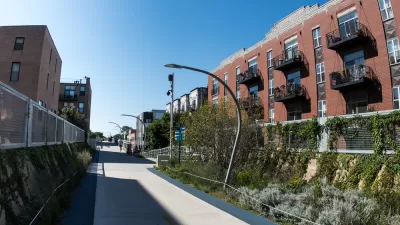Is Whole Foods making Thanksgiving accessible for residents of Englewood in Chicago?
"When Whole Foods opened its Englewood location on West 63rd Street in late September, the natural and organic food retailer identified about 30 staple items that would be sold at much lower prices than at other Whole Foods stores," reports Kori Rumore, Jonathan Berlin, and Phil Geib for the Chicago Tribune.
The store made news as far back as its opening announcement in November 2014. The store is usually a sign of the gentrification ship long having sailed, but in Englewood's case in 2014, any influx of affluence was still speculative and a few years, at least, on the horizon.
Now the Chicago Tribune checks in with the store to see if the company's promises of selling food at less than usual Whole Foods prices are holding true during the Thanksgiving season.
Now almost two months after the 18,000-square-foot store opened, how much can an area resident expect to spend on foods for a traditional Thanksgiving dinner? Is it equal to what someone in suburban Evanston - the closest store location to high-earning enclaves Kenilworth, Glencoe and Winnetka - might pay? How does it compare with the national average?
To complete the study, the investigative team checked the lowest-priced Thanksgiving foods according to the American Farm Bureau Federation's annual informal price survey, comparing the prices at the Englewood store to the Evanston store on Green Bay Road. The findings: the total rang in at $44.60 in Englewood, compared to $74.09 in Evanston.
FULL STORY: Thanksgiving prices at Englewood Whole Foods

Maui's Vacation Rental Debate Turns Ugly
Verbal attacks, misinformation campaigns and fistfights plague a high-stakes debate to convert thousands of vacation rentals into long-term housing.

Planetizen Federal Action Tracker
A weekly monitor of how Trump’s orders and actions are impacting planners and planning in America.

In Urban Planning, AI Prompting Could be the New Design Thinking
Creativity has long been key to great urban design. What if we see AI as our new creative partner?

King County Supportive Housing Program Offers Hope for Unhoused Residents
The county is taking a ‘Housing First’ approach that prioritizes getting people into housing, then offering wraparound supportive services.

Researchers Use AI to Get Clearer Picture of US Housing
Analysts are using artificial intelligence to supercharge their research by allowing them to comb through data faster. Though these AI tools can be error prone, they save time and housing researchers are optimistic about the future.

Making Shared Micromobility More Inclusive
Cities and shared mobility system operators can do more to include people with disabilities in planning and operations, per a new report.
Urban Design for Planners 1: Software Tools
This six-course series explores essential urban design concepts using open source software and equips planners with the tools they need to participate fully in the urban design process.
Planning for Universal Design
Learn the tools for implementing Universal Design in planning regulations.
planning NEXT
Appalachian Highlands Housing Partners
Mpact (founded as Rail~Volution)
City of Camden Redevelopment Agency
City of Astoria
City of Portland
City of Laramie




























